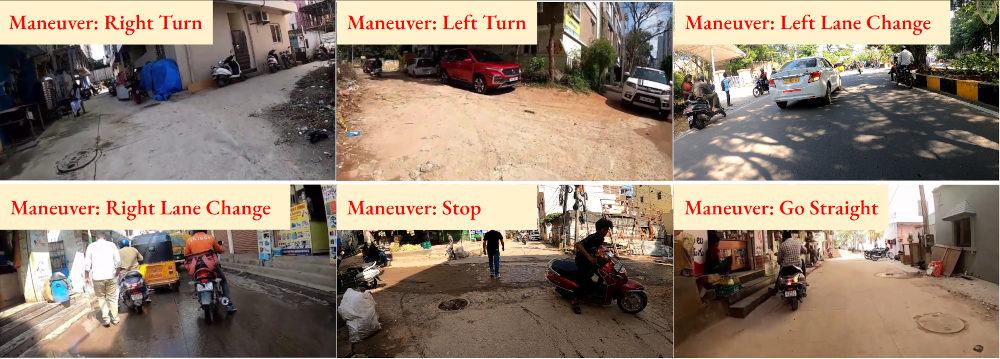Competition Updates
Registration Opens: 26th April 2024
Training Set Release: 10th May 2024 23rd May 2024 (Revised)
Development Peroid: 23rd May to 27th June 2024
Validation Set Release: 17th June 2024 27th June 2024 (Revised)
Development Peroid: 27th June to 19th July 2024
Deadline for Submission of Validation Results: 19th to 22nd July 2024
Test Set Release: 23rd July 2024
Deadline for Submission of Test Results: 23rd to 28th July 2024
Method Submission by Aug 2nd 2024 (via email)
Recent Updates
26th April 2024 - Registration
23rd May 2024 - Training Set
24th May 2024 - Baseline Code
27th June 2024 - Validation Set
-
19th July 2024 - Validation Results Upload Form (Closed)
23rd July 2024 - Test Set
23rd July 2024 - Test Results Upload Form (Closed)
01st Aug 2024 - Leaderboard (Updated)

Scan the QR code to Register
The recent surge in the vehicle market has led to an alarming increase in road accidents. Around 1.3 Million lives are lost in road accidents every year. A considerable proportion of road accidents are attributed to the behavior of vulnerable agents like motorbike riders and pedestrians. This underscores the critical importance of enhancing road safety measures, particularly for vulnerable road users like motorcyclists. India has the highest number of two-wheeler riders in the world with a significant rise each year. According to a report published by the Ministry of Road Transport and Highways (MoRTH), the number of fatal accidents involving two-wheeler riders has consistently increased over the past few years. Furthermore, in congested traffic situations and on roads lacking a clear structure, the potential for accidents persists when a motorcyclist plans to maneuver, regardless of their skill level. For instance, motorcycle riders frequently engage in hazardous actions such as crossing the road diagonally without signaling or navigating through tight spaces between other vehicles to evade congestion. Hence, we introduce a unique Rider Intention Prediction (RIP) competition that aims to address these challenges in rider safety by proactively predicting maneuvers before they occur, thereby strengthening rider safety. This capability enables the riders to react to the potential incorrect maneuvers flagged by Advanced Driver Assistance Systems (ADAS). With this context, we introduced the following tasks for the competition:
- Task 1: single-view rider intention prediction
- Task 2: multi-view rider intention prediction
To accomplish the task described above, we introduce a new video dataset for the competition focused on two-wheeler rider maneuvers as shown in Fig. 1. This dataset contains video clips captured across a range of lighting conditions and traffic densities. Furthermore, it includes footage from diverse interior roads inaccessible via conventional four-wheeled vehicles. Our dataset incorporates a spectrum of traffic conditions and challenging navigational maneuvers on roads with varying lighting conditions. The primary objective of this challenge is to motivate researchers to delve into intelligent transportation system problems and ultimately establish a benchmark.

